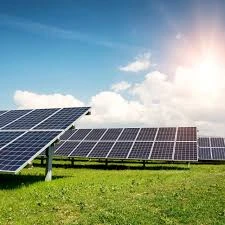panel bifacial vs monofacial
Bifacial vs. Monofacial Solar Panels A Comprehensive Comparison
In the quest for renewable energy solutions, solar power has emerged as one of the most promising avenues for reducing our reliance on fossil fuels. Within the solar panel market, there are two primary types of solar panels that are gaining traction bifacial and monofacial panels. Both technologies offer unique advantages and face specific limitations, making it crucial to compare them thoroughly. This article will explore the differences between bifacial and monofacial solar panels, evaluating their efficiency, cost, installation, and environmental impact.
Understanding the Basics
Before delving deeper, let’s clarify what bifacial and monofacial solar panels are.
- Monofacial Solar Panels These are the traditional solar panels that feature photovoltaic cells on only one side. They capture sunlight that directly hits them, converting it into electricity. Monofacial panels are widely used in residential and commercial installations due to their established technology and lower initial costs.
- Bifacial Solar Panels As the name suggests, bifacial panels have photovoltaic cells on both sides. This design allows them to capture sunlight from both direct and reflected sources. Bifacial panels can utilize the albedo effect, where sunlight reflects off surfaces like snow, sand, or light-colored rooftops, thereby increasing their overall energy output.
Efficiency and Performance
One of the most significant advantages of bifacial solar panels is their increased efficiency. Studies have shown that bifacial panels can generate between 10% to 20% more electricity compared to their monofacial counterparts, particularly when installed in optimal conditions—such as on reflective surfaces. This increased efficiency can be a game changer for solar project developers and homeowners, as it translates to greater energy production without requiring the installation of additional panels.
However, the performance of bifacial panels is highly dependent on the installation environment. Factors such as the tilt of the panels, the surrounding surfaces, and the geographical location can significantly influence their effectiveness. Conversely, monofacial panels are more predictable in performance as they rely solely on direct sunlight, making them a reliable choice in various settings.
Cost Considerations
panel bifacial vs monofacial

When considering the upfront investment, monofacial solar panels generally have a lower initial cost compared to bifacial panels. The technology for monofacial panels is well-established, and they have been mass-produced for years, keeping their prices relatively low. This makes them accessible for a broader range of consumers, particularly those with budget constraints.
Bifacial panels, on the other hand, often come with a higher price tag due to their dual-sided technology and the additional mounting equipment needed for effective installation. However, the increased energy production they offer may offset these initial costs over time. Additionally, many governments and institutions are recognizing the long-term benefits of bifacial technology, leading to subsidies and incentives that can make these systems more financially attractive.
Installation and Maintenance
From an installation perspective, both types of panels have their own requirements. Bifacial panels necessitate specific mounting systems that allow sunlight to reach both sides. This often entails elevated installations on ground mounts, which can increase installation complexity and costs. Monofacial panels, being simpler in design, can be more easily integrated into various building architectures, making them a favored choice for residential purposes.
Maintenance for both types of panels is relatively low, but bifacial panels may offer an advantage in certain conditions. As they capture sunlight from multiple angles, they can potentially lead to less energy loss due to shading and dirt accumulation. However, keeping both sides clean is crucial for maximizing their efficiency, which may require additional maintenance efforts.
Environmental Impact
In terms of environmental impact, both bifacial and monofacial panels are sustainable energy solutions that contribute to reducing carbon footprints. However, bifacial panels may offer greater returns on investment in terms of energy production, ultimately leading to faster paybacks in terms of energy offset.
Conclusion
In conclusion, the choice between bifacial and monofacial solar panels will largely depend on specific project needs, budget constraints, and installation environments. Bifacial panels offer higher efficiency and energy production potential but come with a steeper initial cost and installation complexity. Monofacial panels, while generally more affordable and easier to install, may not match the energy output of bifacial models in certain conditions. Ultimately, as technology continues to evolve and climate considerations grow more urgent, both types of panels will play crucial roles in our transition toward cleaner energy solutions. By carefully evaluating each option, consumers can make informed decisions that best suit their unique circumstances and contribute to a more sustainable future.
-
Unlocking Energy Freedom with the Off Grid Solar InverterNewsJun.06,2025
-
Unlock More Solar Power with a High-Efficiency Bifacial Solar PanelNewsJun.06,2025
-
Power Your Future with High-Efficiency Monocrystalline Solar PanelsNewsJun.06,2025
-
Next-Gen Solar Power Starts with Micro Solar InvertersNewsJun.06,2025
-
Harnessing Peak Efficiency with the On Grid Solar InverterNewsJun.06,2025
-
Discover Unmatched Efficiency with the Latest String Solar InverterNewsJun.06,2025







